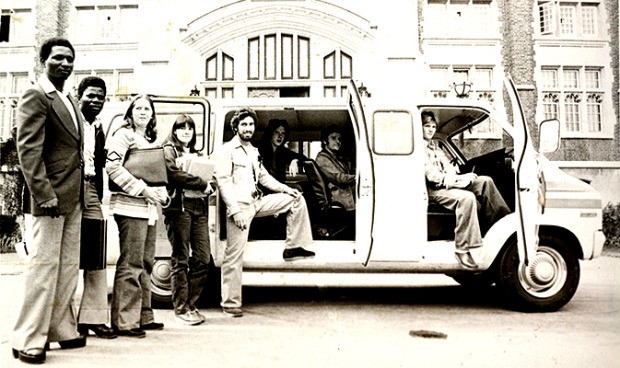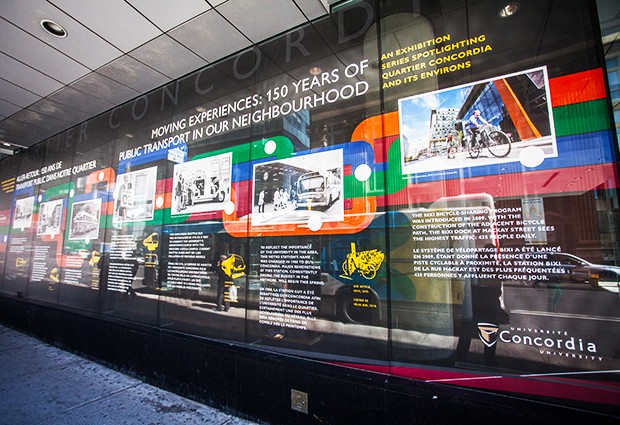From beasts of burden to metro cars: 150 years of public transportation in Montreal
With Montreal’s metro cars set to be replaced and its bike-share program Bixi in jeopardy, public transit is, as always, a hot topic of conversation in the city.
In light of this, the most recent exhibition mounted in the windows of Concordia’s Engineering, Computer Science and Visual Arts Integrated Complex (EV Building, 1515 Ste-Catherine St. W.) explores the evolution of technology and transit systems in the western downtown core.
Moving Experiences: 150 Years of Public Transportation in Our Neighbourhood offers a glimpse into the history of transit in the district that incorporates Quartier Concordia — the area bordered by René-Lévesque Boulevard and Sherbrooke, Bishop and St-Mathieu streets.
As Clarence Epstein, Concordia’s senior director of Urban and Cultural Affairs, explains, “These semi-annual exhibitions underline the vital connections between the university and the evolution of this neighbourhood.”
Using archival images, the window display traces the evolution of public transit “from where it was driven by beasts of burden to the state-of-the-art machines of today,” Epstein says.
He explains that the City of Montreal’s transit strategies have affected the development of Quartier Concordia in more ways than one.
 Concordia’s first shuttle bus — a rented van — in 1976. | Photo courtesy of Records Management and Archives
Concordia’s first shuttle bus — a rented van — in 1976. | Photo courtesy of Records Management and Archives
In 1988, Guy metro station became Guy-Concordia, acknowledging the university’s presence in the neighbourhood. And in 2007, a permanent bike path on De Maisonneuve Boulevard — passing directly through the Sir George Williams Campus — was inaugurated.
“The introduction of the bicycle path on De Maisonneuve, the revised bus circulation on Guy Street, the addition of wider sidewalks with quality finishes — all those notions have been integrated as part of a public transport strategy for Quartier Concordia,” Epstein says.
This exhibition, which is displayed outdoors, offers a timeline that incorporates those developments.
“It’s just another way of educating passers by as well as the residential community, the merchant community and the university community about all these interesting facets that enrich the area but are not always so obvious,” Epstein says.
The exhibition is the fourth in a series spotlighting Quartier Concordia and its environs. While each focuses on a different theme, the underlying goal is always the same, Epstein explains.
“For so many years, this neighbourhood was neglected and didn’t really have a pride of place in the downtown core. We’re trying to re-instill that pride of place.”
Check out Moving Experiences: 150 Years of Public Transportation in Our Neighbourhood.


